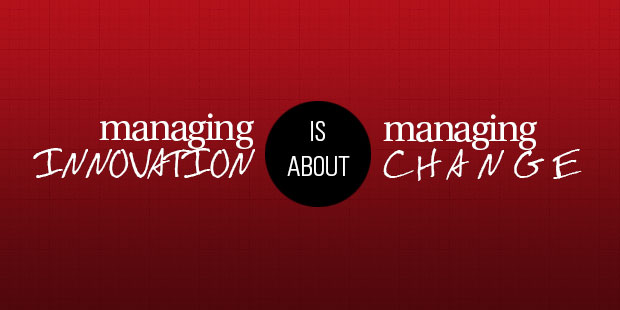
5 Thoughts on Innovation in Organizations
Every organization must deal with change. The crux of the matter is not if change will take place, but if the organization can lead change rather than just react to it. The most common type of proactive change is innovation.
Innovation is simply an attempt to do something new or differently in order to achieve better results. It sounds simple, doesn’t it? But any leader knows well that introducing innovation in an organization is easier said than done. Volumes have been written on change, change agents, and organizational response to change. My purpose in this brief article is to discuss just one facet of change: introducing innovation to the organization.
Five Thoughts
Most organizations do not naturally embrace innovation. Those who therefore attempt to introduce it to the organization often meet both active and passive resistance. We must be astute students of innovation to understand how we can best move new ideas forward. Allow me to suggest five thoughts on the matter.
1. Leaders must lead and model innovation. New ideas and initiatives cannot just be theoretical rhetoric. Leaders must hold themselves accountable for introducing innovation on an ongoing basis. The leader must persistently push the organization to embrace innovation as a value and priority.
2. Innovation must be embraced by the organization as a whole. This thought is naturally corollary of the first. Innovation cannot be autocratically dictated. Without ownership at all levels, innovation is likely to fail. Passive aggressive behavior is common unless people truly believe that innovation is critical for their own success as well as the success of the organization.
3. Leaders and others throughout the organization must resist the common objections to innovation. The challenge is that the objections are often valid. So it’s easier to yield to the objections rather than to find ways around them. Some of the more common words of resistance are: “We don’t have the capacity to do something new”; “We tried that before and it didn’t work”; “It costs too much and the payback is too long term”; and “We just need to focus on that which is already core to our organization.”
4. Innovation is a step of faith. Introducing innovation to the organization would never be problematic if we knew we had guaranteed success. So many organizations get involved in analysis paralysis to demonstrate why something won’t work.
5. Some innovation failure should be normative in organizations. It is unlikely that there will be any tolerance for innovation if there is little tolerance for failure. If the members of an organization expect that innovation failures will be punished, you can be sure that few, if any, will ever be innovators themselves. It is easy to fall back on the comfort of pain avoidance.
A Time for Change
The writer of Ecclesiastes reminds us “there is an occasion for everything, and a time for every activity under heaven” (3:1, HCSB). Never have I witnessed such a time of change. Sure, change has always been a reality. And certainly we have clear evidence that the rate of change is ever increasing.
But what our world and our organizations are experiencing today is seismic change. It is the type of change that will permanently alter the landscape of our reality. Those organizations that fail to grasp that reality and fail to respond to that reality are already on the path of failure.
Never before have organizations needed to change and innovate like they must do so today. Certainly the infusion of innovation must be measured and introduced with great discernment.
But the failure to innovate is a huge barrier for entering the future.
And it may be the beginning of a certain path to death.
Read more from Thom here.

Tags: Change, Innovation, Structure, Thom Rainer

















